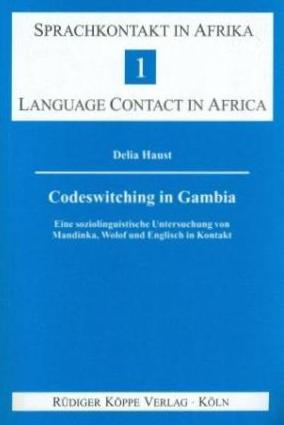


The first part of the present study covers theoretical aspects of codeswitching, using two discourse-pragmatic and two grammatical models. On the basis of these models the author develops a framework for her empirical study of the double overlapping diglossia in Gambia, where two African lingua francas serve as Low varieties in contrast to the official language English, and as High varieties in contrast to the local languages.
Haust includes brief sketches of the main languages involved, Mandinka and Wolof, reproduces the questionnaires and data of the informants, followed by diagrams and cross-tabulations showing the cases of codeswitching. The final chapters give a structural categorization of codeswitching and its sociopragmatic criteria.
Under these links you will find publications by the author, further descriptions of the Mandinka language and culture and studies of sociolinguistics:
This Ph.D. thesis from Hamburg deserves attention not only because it is the first volume of a new series on language contact in Africa. It is also an interesting case study of the sociolinguistic situation in a country about which very little information has as yet been published and of the unusual phenomenon of double overlapping diglossia there, where two African lingua francas serve as L(ow) varieties in contrast to the official language English, and as H(igh) varieties in contrast to the local languages. Such complex situations may become more common in Africa in those areas where African lingua francas are developped. [...]
To sum up, a striking feature of the book is that it looks at CS from as many different angles as possible and still manages to build a mosaic where each detail falls into place to complete the picture [...]
Josef Schmied in International Journal of Applied Linguistics, 6/1, 1996, 155-159
© 2026 by Rüdiger Köppe Verlag – www.koeppe.de